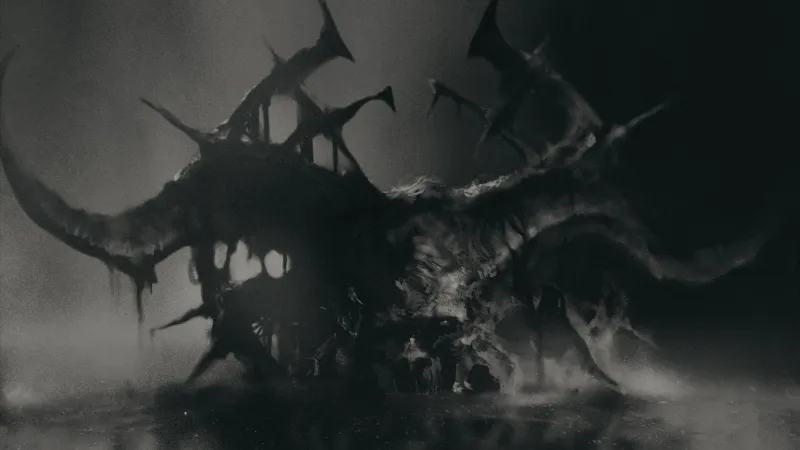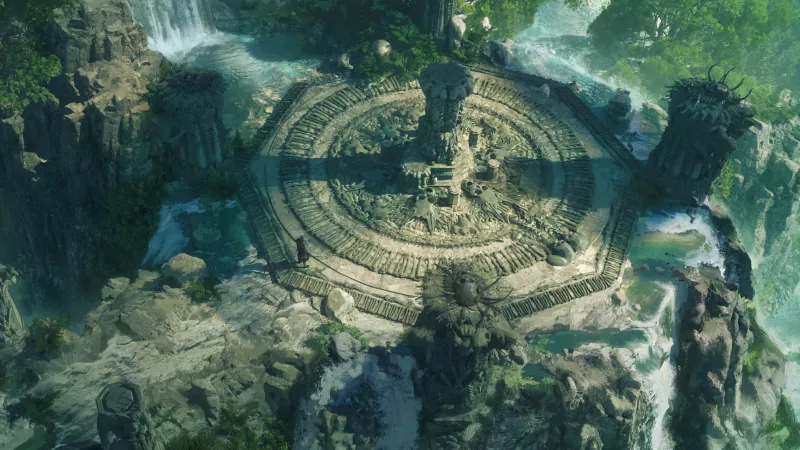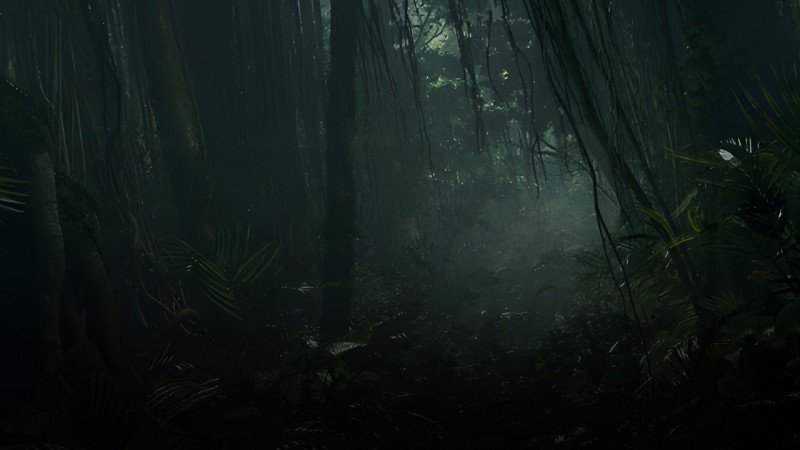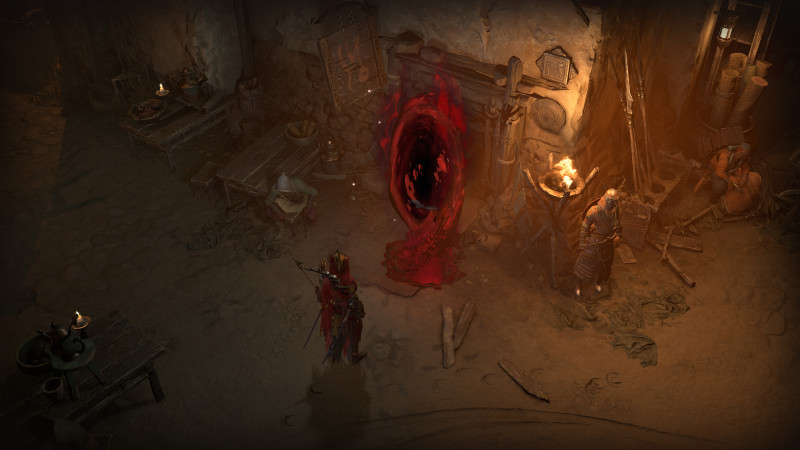
This past weekend was a big one for Blizzard, as its yearly BlizzCon event brought news across several properties, including World of Warcraft, Overwatch, and Diablo. In the wake of the expansion announcement and seasonal reveals that rolled out about Diablo IV, we had the chance to speak with Diablo franchise manager Rod Fergusson and game director Joe Shely. We asked about the studio’s development processes post-launch, the specifics of gathering and responding to fan feedback and criticism, and the most critical priorities for Diablo IV in the months following launch.
Game Informer: With the acknowledgment that it’s very different individuals and teams involved, on a studio level I’m curious if there are things about the post-launch support for Diablo III that are now being put into use and informing how you all approach post-launch support for Diablo IV?
Joe Shely: Well, I think that having four Diablo games available allows us some opportunity to learn from what different teams are doing and take best practices from those. But I think the fans of Diablo III who have enjoyed seasons of that game have certainly helped shape how they play out. A lot of things that you saw in the most recent season are a direct result of those kinds of fan feedback. And I really think that when we look at how Season of Blood in Diablo IV has come out, and all the quality-of-life changes that we made there, that’s kind of the same kind of strategy. It’s really about listening to what our fans are telling us that they want to see. And it’s been really cool with season of blood, this is kind of the first chance that we’ve had to incorporate some of the things that we heard from players at launch and during season one. And so yeah, I think that we absolutely share that from Diablo III.
Rod Fergusson: From a team structure perspective, it’s very different. And part of that is because when you look at what a season of Diablo III is, especially in these later seasons, we’re up to season 29, the seasons were sort of self-contained enough that you could kind of build them in serial. So, you would ship a season and start the next season's development while people were playing the current season.
We aren’t able to do that with Diablo IV because the seasons are a lot more robust, there’s more content, when you think about the questline and all the things that we’re doing there.
So, when you look at our structure, it was a big change for us. It’s one of the things that the team is going through right now is this transition from what we call a box product structure to a live service structure. And the way that we visualize that are what we call swim lanes.
Right now, if you look at where we are today, we have a live team swim lane, which is the people who are focused on balance and the things that are happening today in the game. We have another swim lane, which are the odd seasons – so, season one, season three – and we have another swim lane which is even – season two and season four – we have an expansion one swim lane, and we have an expansion two swim lane.
So, what would normally be one sort of big central team, ours is now broken up into a bunch of little smaller teams that are working in a way that we haven’t really worked before. When you get into the notion of branches within our code base, and how we manage across all the streams and how we manage the codebase, and all the branches within – it gets very complex. And that’s been the challenge – that we need to make sure that we have enough of a team to be able to fill out all these swim lanes.
But we also want to do it in a sustainable way, because we’re a live service. Because if you’re burning the candle on both ends all the time, it’s not sustainable. And so it’s been finding the right-sized team to be able to do the right kinds of work in a sustainable way.
That notion of going from a sort of serial development to parallel development has been a huge learning and a big part of our transition.
GI: I have to imagine it creates significant challenges in terms of overall management. To use your terminology, you’ve got to make sure that what one swim lane is doing doesn’t interfere with what the other swim lanes are doing.
Fergusson: I agree with you. But I think that’s actually one of the lesser challenges for us. One of the bigger challenges is just keeping people in their lane. Like, if there’s something the season three team has that they need some help on. And then you go, we’ll pull from the season four team to help them or we will pull from the expansion, then you’re kind of robbing Peter to pay Paul.
That’s one of the hardest things. We see that in any game that’s trying to do near-term after-launch content, is that you have this tension between we’re shipping a game, and we’re making another thing to go right afterward. And if you put all those people on shipping the game, then you’re you’re basically building in serial again. So that’s a big cultural change, to be able to say, we are committed to building in parallel, and when you’re assigned to your lane, you've got to stay in your lane. Otherwise, that lane is going to fall behind.
That’s one of the big things that we try to make sure that people understand is that we have separate teams to do this work. This isn’t a “Oh, because of your expansion, you’re hurting your season work” or any of that kind of stuff. That’s not the case, right? We staff up early for those things. And we have a season team and multiple season teams and multiple expansion teams.
The fact that we have brought in Blizzard Albany, and the fact that we have a lot of remote work, and all the outsourcing we do, it’s a very big global team that’s working on all these swim lanes. So we have less of the, “Hey, don’t do that, because it’s going to break” and it’s more about “Hey, stay in your lane so that everything’s moving forward at the same time.”
GI: One of the other things I was curious to talk to you about – how to keep everyone at the studio happy and healthy and not always being just weeks away from the next big launch.
Fergusson: Yeah, and you have to change your development culture; that always shipping culture is a different culture. And that’s one of the things that, at the studio, we have these challenge coins we use to signify that you’ve shipped a game. Like, here’s a big Diablo IV coin. And one of the things we want to do is make sure that we’re recognizing seasons as well, it’s not just that seasons come and go. We want to celebrate: We launched the season, here’s a seasonal coin, to go with that feeling of accomplishment that you’re not on some sort of treadmill. We want to have those moments of recognizing that you are actually shipping something as meaningful, which means a lot to the players.
It is a different mindset to go from shipping once every few years to, “hey, we’re shipping every quarter.” That does take a bit of a shift. But what’s really nice is that you get a lot of cool creative moments. And you can try things really quickly. And you can iterate. Like, we used to teach this software course, when I was a Microsoft consultant that talked about, I’m going to start an idea, and then three late years later, ship it, that would miss the mark more than if you shipped every year, three times and you iterate it each time, you would get closer because you’re getting feedback, and you get that interaction, and work with who you’re serving.
And that’s what I think of with these quarterly seasons. It’s a collaboration with our players to iterate. And a new season is really a fresh start, where we go, what do we learn from the past that was working that we can lean into, what is maybe not working, we can lean away from, but it’s always a collaboration. And because, I think Joe said this in the past, that once we release it, it kind of becomes the players' game. So now it’s like, okay, how do we work with them to continue making the game more fun?
I’ve heard you both say part of Diablo IV’s ongoing development involves feedback from the game’s active players. Would go into that a little bit? Where is that feedback specifically coming from?
Shely: Yeah, absolutely. Some of it is organic, right? Some of the time I spend is looking at reaction to things that we that we’ve announced. Like today, I was here at Blizzcon in one of the areas that was not the stage where everything was being announced, but was, in fact, the Diablo area. Because I wanted to hear the reaction from all the people clustered there. What are the things that they’re reacting to? And saying like, “Oh, like we’re really excited about that.” And what are the things where we’re not seeing that same kind of excitement, right? So part of it is organic, and me and the other developers following the zeitgeist of the community. And part of it is the work of our incredible community teams. And we have a user research team who works hard to follow things. We look at players actually playing the game and sit down and talk to them one one-on-one, because designers have this experience all the time, when you are sitting there with someone, someone will be maybe confused by something. And they’ll say, like, “Oh, I was confused, I didn’t understand that I made a mistake,”
And we’re like, “no, no, that is confusing,” You won’t see or hear those elements of it if you just ask. And so our user research team does that.
Of course, we have all kinds of analytics on the game. So we can look at things like what is the player’s average level. We increased the experience rate in season of blood significantly by about 40%. And so we’re able to look and say, “okay, are players leveling faster in Season of Blood than they were in season of the malignant?” And they are, so that allows us to validate that those tuning changes that we made are working correctly. So it’s sort of a combination of all of those factors,
And of course, many of our fans are extremely passionate, and so they are very good at talking about things that they want. And so it’s we get a lot of opportunities to hear what they’re saying, we have to pay attention because when players are are passionate about things, they’ll they’ll give us a lot of feedback at once. But we also want to use methods of feedback that we can reach out to players who maybe we aren’t hearing from.
Fergusson: We also have roundtables where we reach out to certain folks who we can bring in and look at patch notes early, or we can have discussions with about things we’re thinking about.
And then it becomes a question: When we look at the prioritization, how important is it to do right now? How much work? Is it months of work? Should we make it part of another season? Is it hours of work? So let’s hotfix it tonight – that kind of thing.
And how risky is it? Is there a possibility for destabilization? Because, one of the things that I think some people tend to forget – they think about implementation time about how long does it take to do, but don’t think about the testing time and the prepping time or the getting it out on the servers.
And so we always have to think about the ripple effect that can change that one line of code, but not going to bring in QA over the weekend. We always have to balance where we are and what the sentiment is, and how important is this, really? And how risky is it? And how much work is it and, so again, that’s part of having a sustainable, live service. If everything is a fire drill, then it becomes hard to understand what’s important and what’s not.
I think Joe also covered it, but everything from user research, surveys, to global insights data, to roundtables, to social media, to our community team doing forums and, and all that kind of stuff. It’s been really interesting, as we’ve been doing that because season one was in parallel, like I talked about parallel development, and I talked about doing stuff at the same time. That’s what season one was; we knew we wanted to have season one in six weeks after launch. And to do that we couldn’t start the moment it launched; we couldn’t build in six weeks. So season one was basically task-complete when we clicked: Launch the game. And so season one didn’t have a lot of the learnings that we got from pre-season, because it was already finished. So this season two, as we saw with the 14,000, word patch, was our real first meaningful way to respond.
We did a lot of hotfixes on season one, like we fixed where we could as quickly as we could, where we addressed feedback. But for season two, we’re able to bring all this stuff. And then we actually made a big meaningful decision. Joe was part of that, we’re not going to just try to only have stuff at the beginning of the season, we’re going to have things throughout. And it’s about the time it takes to build and less about, oh, you know, if we deliver this later, that’ll make them stay. That wasn’t the thinking. It was the notion of the Occultist Review Window is coming, because that’s how long it took to get it ready. And instead of folding it to season three, let’s give it to the players right away. And the same thing with the rings, like with the rings it was saying this is when we could get it in. And we know some people really loved, like the necro ability as an example of season one. So season two represents a change in philosophy of not just only have releasing moments at the beginning of each season. Let’s allow ourselves to release throughout the season, which again, helps make it a sustainable service that our team can work on.
What’s in that feedback that you’ve gotten? What would you say are the three or four biggest points that went up on that board around the idea: This is what our players really want?
Joe Shely: At a high level, the first thing was really to show players that we were paying attention to what they were saying. That’s not literally one of the changes. It’s the meta of it. That means things like, when we go to look at the things that are really important – I was talking before about the making the experience 40% faster, right? We didn’t just go in and change one number and multiply it by 1.4. There are a variety of changes that come together to create that result. And in fact, the second half of the leveling curve is the part that we, in particular, wanted to accelerate. And so we had to bring all that together, but it came out of feedback from players saying like, “hey, you know, it felt like it the game really slowed down. I got to level 60 or I got to level 70 and felt like the game really slowed down.”
So, certainly the pacing of leveling, and in particular, when we launched the game, we saw getting to 100 as more aspirational, like some players really set a goal for themselves. Like, I’m gonna get to the max level. That’s my goal. And so we knew at season two that we needed to respond like that, then that is the goal that that needs to be there, right? We needed to make changes to accommodate that.
Fergusson: And why you created Abattoir of Zir – because it’s a recognition that there will be a level 100 player who’s looking for more to do.
Shely: Exactly, yeah. You mentioned two or three things. So, the next point is that players have really told us how much they jumped into the game and played many hours, and then ask for more. We want more endgame, you know. And so Abattoir of Zir is an example of that. We added the Boss Ladder in reaction to that. And then I think, really the third one, the third big sort of whiteboard moment, they’re after, you know, the speed of the game and the pacing. And I throw density in there, probably both facing endgame.
Itemization is really the third one that I think is really key. And you’re going to see a lot more of that, as we continue to develop the game and future seasons. You see a little bit of that with some of the malignant rings that we brought forward. Those are specifically elements that, you know, necromancer players said, “Hey, we love this malignant heart.” And we brought that for with the malignant rings. But we have a lot more to do there with organization, and we’re gonna see a lot more of that.
Fergusson: I think itemization – to Joe’s point – that’s a huge topic. It’s woven throughout how you deal with rewards and loot. It’s woven through every every aspect of the game. So what we’re able to do though, is we’re able to improve things and iterate on things to get more feedback. Two really clear examples of where we’re already leading to. One was around the notion of changing how item power works. And so that was one of the things that happened, was that as you got later in the game was you get to the level 70 or level 80, the range of power of your thing with legendary that would drop would stay the same. So, fighting harder monsters at a higher level didn’t necessarily rank a better loot, it was still good loot, but it had a wide range. And now, in season two, the floor gets raised up. So, the harder the enemy, the better, more powerful the loot is. And the other is that they went back and redesigned a lot of the uniques to make them more powerful, too. And so those ideas of the uniques and the item power is definitely doing that.
You can read Game Informer's Diablo IV review by following the link.
Source: Game Informer





Comments
Post a Comment